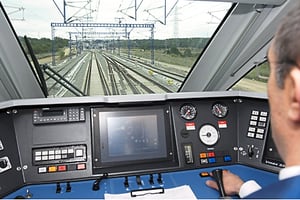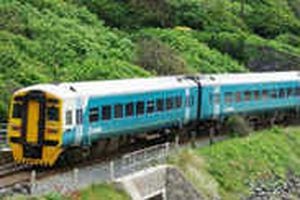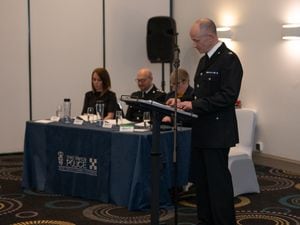Fears as Shropshire metric test trains go through stop signals
Five trains have jumped red lights on a line through Shropshire and Mid Wales – because of a trial scheme to turn Britain's railway system to metric.

The Cambrian line, which runs from Shrewsbury, has been used as a test bed for a new system in which mile markers are replaced with kilometres.
But train drivers have criticised the trial as a "total mess" and warned it creates an "unacceptable risk" to passengers.

Arriva Trains Wales, which runs the Cambrian line service, confirmed there were "a small number" of incidents during the early months of the pilot in 2011, but disputed the suggestion that the change from metric to imperial measures was irresponsible.
Arriva's Claire Lillie says: "When the pilot scheme for the ERTMS system was being introduced, a small number of incidents were recorded, but these were not related to the change from imperial to metric and posed no risk to the public due to the safety features built in to the ERTMS system.
"ERTMS replaces line side signals. Instead a computer in the driver's cab controls the speed and movement of the train, whilst taking account of other trains on the railway.
"This means a driver won't see a red signal but will be given a Movement Authority. If a driver proceeds beyond a Movement Authority the train is stopped safely within a supervised location, which poses no risk to passengers."
The popular line takes tens of thousands of tourists each year to the Welsh Coast as well commuters to and from Welshpool and Newtown. It was chosen to test a new metric computerised signalling system in which information is fed about the train's location and speed to a screen inside the cab.
The European Rail Traffic Management System will go countrywide after a ruling by the European Union. While the system is being phased in, drivers will have to cope with dealing with both metric and imperial.
Mick Whelan, general secretary of train drivers' union Aslef, said Network Rail had not adequately adapted the infrastructure on the line for the trial. He said five trains had gone through red lights in as many months and warned of widespread disruption when the system goes nationwide.
His concerns are backed up in a survey by the Rail Safety and Standards Bureau, which found the trial had shown failings.
Mr Whelan said: "We fear a total mess, just like the failed trials on the Cambrian line, where the infrastructure was not adequately adjusted. It is an unacceptable safety risk to expect train drivers to cope with signalling data which switches between mph and kilometres per hour, depending on which bit of track they are on."
Arriva Wales, which operates services on the Cambrian line, said there have been difficulties with the use of metric measurements since the trial began in March 2011.
Network Rail said: "Our aim is to digitise the railway to ensure Britain has the network it needs for the future."
Will Britain conform? Prospect is miles away
Perhaps it would be an exaggeration to describe it as full steam ahead, but it does appear that the metrication of Britain's railway system is well on its way.
But does this signal the end of the Great British mile?
It seems unlikely. When Britain announced its intention to adopt the metric system in 1965, it was originally planned that road signs would switch to use metres and kilometres in 1973.
However, following the change of government in 1970, Edward Heath's Conservative administration put the scheme on indefinite hold, and it has never been reinstated.
While all vehicles registered in the UK since 1977 have been required to have a speedometer capable of displaying speeds in kilometres per hour as well as mph, the Government has said it has no plans to switch road signs or speed limits to bring them into line with Europe. On the contrary, successive British governments have gone to great lengths to negotiate opt-outs with the European Union about the use of metric measures on road signs.
Indeed, several attempts to impose the metric system on the UK have often been thwarted by opposition from the public. In the 1980s the British Government twice asked the European Union for extra time to comply with EU deadlines for metrication.
Will Britain ever embrace the metric system? Supporters of plans to convert railways to metric point out that the system has been taught in UK's schools for 40 years. Yet, a straw poll of twenty-somethings in the newsroom found they were still more likely to use imperial units for heights, distance or volumes.
It seems this battle is not over – not by a country mile.





